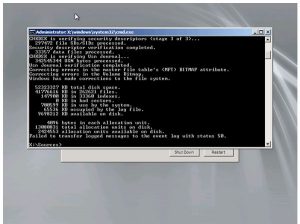I Get A Message, An Unspecified Error Occurred 766f6c756d652e63 461 In Windows.

I am facing a problem. Whenever I start my computer, CHKDSK asks me to run a test. Then I am forced to run the test. When I run the test, the screen shows a message saying, an unspecified error occurred 766f6c756d652e63 461, and the computer does not start. Please help.













